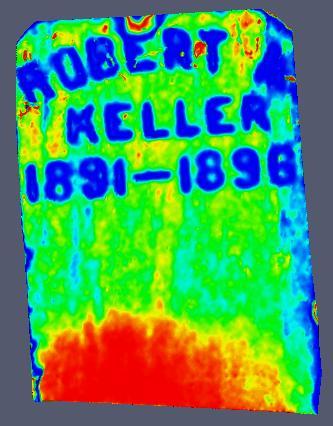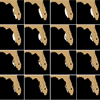 |
The objective of this project is to develop a visual analytics method to discover dynamic patterns in Malware Distribution Networks (MDN) based on the data extracted from Google Safe Browsing reports, providing insight on their structure, evolution, and persistence over time. The visualization will help to define the visual ontology, a set of visual-semantic representations of the distribution behaviors for tracking, measuring, searching, comparing, and learning. The outcomes from this project include the MDN visual analysis tool, real-time demos online, MDN workshops at either Google site or CMU, and joint publications with Google researchers. |
Visual Privacy
 |
Recent innovations have created a 3-D millimeter wavelength imaging system to be used in full-body scanners. This technology has raised privacy concerns since the scanner produces an almost naked image of the subject. This project aims at creating algorithms that blur private parts but reveal weapons. [more] |
Endoscopy Video Analytics
 |
Colon cancer is the second leading cause of cancer-related deaths in the United States in both men and women. Colonoscopy-based early screenings can significantly prevent development of colon cancers. The goal of the project is to further develop the deployable technologies of the voice-to-text annotation from colonoscopy videos and Quality of Exam measurement matrix in clinical environments. We have developed the new scope motion and examined surface measurement algorithms and tested with the 3D motion sensor. We also achieved the real-time measurement performance and tested in the clinical environment. |
Cognitive Video
 |
Advanced video surveillance systems create large overheads by presenting too much information. This overload creates problems in a situation where there is insufficient bandwidth and attention given to the set being processed. Over 99% of data fed into the control room is wasted. This project seeks to minimize the wireless video network throughput while maximizing the video quality with multiple resolutions on demand. [more] |
3D Surface Analysis
 |
The team of VIS developed new 3D scan and reconstruction software that can reveal subtle features on a surface. [more] |
Archeological Conservation
 |
VIS has successfully restored headstone names for St. Luke Church--a historic 200 year-old site--located in Carnegie, PA. Since then, our lab has received many inquiries for help. We will implement cutting-edge 3D imaging, scanning and reconstruction technology for other endangered landmarks. [more] |
Object Detection Tracking
 |
This project aims at developing a semantic object detection system for real-time video processing as the event happens, as well as afterwards. This will greatly reduce network data traffic and evidence retrieving time. Since data is presented on-demand, our solutions will preserve privacy by minimizing data emissions. [more] |
Spatio-Temporal Data Mining
 |
This project uses Bayesian modeling and a computer vision based object tracking algorithm to monitor the harmful algae across regions. Our goal is to incorporate this model for algae blooms with operational monitoring and prediction systems in the field. [more] |
Sound Pattern Classification
 |
This project aims at using sound classification in developing affordable sensing technology for monitoring physical intrusions. The goal is to classify sound patterns from natural environments, such as cars, trucks, airplanes, etc. This project has far reaching consequences for medical diagnostics and safety alert systems. [more] |
Real-Time Wireless Device Positioning System
 |
Growing sensor webs create problems for indoor wireless self-positioning. Real-time wireless device self-position is essential for locating and tracking wireless users. This project aims to enable an affordable 802.11 RSSI-based positioning technology and demonstrate its capability with existing facilities in the Carnegie Mellon Andrew wireless network. [more] |
Multipoint Mobile Video Streaming for Transit Security
 |
This project aims at creating solutions for affordable wireless video streaming over long distances while ensuring a smooth video signal handover along the 802.11g access. This would enable technologies for distributed video network protocols and streaming. [more] |
Onboard Inverse Physics in Sensor Web
 |
Inverse Physics is the process of retrieving physical properties from observations. The objective of this study is to build an embedded data mining processor for onboard physical property retrieving, which would significantly reduce the cost of physical inversion for combined observations. [more] |
